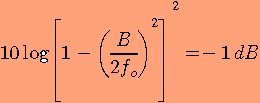|
Mobile Radio Environment |
The propagation of a narrow-band carrier signal is a
conventional means of communication. However, in a CDMA system, using the
ideas that were discussed in the previous section, the propagation of a
wide-band carrier signal is used. Therefore in order to design CDMA
systems, we have to study both, propagation of the narrow-band wave and
then propagation of the wide-band wave.
A. Narrow-Band (NB) Wave Propagation.
Let us consider the case when a signal is transmitted from the cell-site
and received by either a mobile or portable unit. Since the antenna
height of the receptor unit is close to ground, three nondesirable effects
are observed:
Due of these phenomenona, it can be shown that if the
transmission rate, Rb, is higher than
10K Samples/s, there is a need to use an equalizer in both, FDMA and TDMA
techniques. On the other hand, CDMA does not need an equalizer but a
simpler device called correlator.
B. Wide-Band Wave Propagation.
A couple of phenomenona should be consider in the system design
for this case, specifically:
Path Loss and Multipath Fading Characteristic on Wide-Band.
Path Loss problem, if the effective power received is
Pr, when a signal is transmitted with a power Pt, it can be shown, that
Pr is equal to:
 ---------(1)
---------(1)
Where k is a constant factor, c is the speed of light, Gt and Gr
are the gains of the transmitting and receiving antennas, respectively.
The above equation is a general formula. For a narrow-band signal, B<
On the other hand, from (1) we may find the B/fo ratio for the
case of 1-dB difference in path loss between narrow-band and wide-band.
That means, to solve the denominator of (1) as follows:
Solving, we finally obtain B = 0.66fo. Fortunately, in most wide-band
applications, B will not be wider than fo/2. Thus, the narrow-band
propagation path loss should be applied to the wide-band propagation path
loss.
Multipath Fading Characteristic,
It can be shown that the wider the bandwidth, the
less the fading. The fading effect is strongly affected by the effective
number of diversity branches, M. The M factor depends on the number of
buildings surrounding the transmission area. M is larger in the urban
area than in the suburban area.
 (Narrow-band)---------(2)
(Narrow-band)---------(2) ---------(3)
---------(3)![]()
![]()
![]()
![]()
Send comments to webmaster
Copyright © 1997 Derek Mc Donnell.
All Rights Reserved.
Last updated 07-Apr-1998.